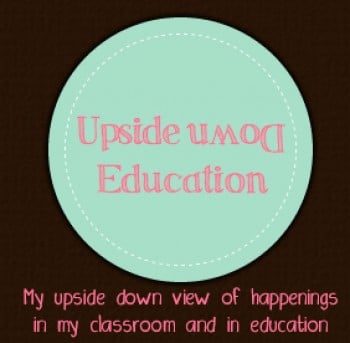In my house Disney Channel and Disney Junior get top billing. Even more than ESPN or E!. One of the reasons I will always choose these channels for my kids over Nickelodeon is the commercials. I HATE the Nickelodeon commercials, it is always some cheaply made or ridiculously inappropriate toy with a loud annoying kids or announcer. (Not to mention the ‘Mom I want that!’ that ensues afterwards.) Disney on the other hand does a great job of either not having commercials in the middle of shows (Jr shows are commercial free) and then having commercial time filled with short films/shows. Thank you!
Last week one of the short films came on featuring the Disney Fairies (you know Tinkerbell’s friends). On the video, Rosetta was supposed to be teaching the other fairies how to plant, then grow, a flower. Rosetta hands them the seed and then goes to a lounge chair and declares “Teaching is easy!” The fairies start using what there gifts are to try to plant this seed. For example, Tinkerbell builds a huge contraption to dig the hole and plant the seed. But all the fairies’ ways turn out to be failures and the seeds don’t get planted. Rosetta wakes up in time to see all the chaos and unplanted seeds and announces “Ugh teaching is hard!”
This cartoon really caught my attention as well as made me think of a few different things.
1. I believe sometimes people view problem based learning or some inquiry based learning as this. The teacher tells the class to do something and just sit backs and relaxes while the class works. Then they look at the finished result. I would HOPE this is not how it is done. During PBL lessons the process is just as important as the rest of it. When you watched the fairies, even though it is comical, they all used different ways to plant their seed. Maybe that wasn’t such a bad thing, yes they all “failed” at growing a flower but it became obvious why the flower did not grow. If it was a real classroom that is when the real questions start, ‘why did your plan not work?’ ‘what would you do differently?’ ‘I bet your way and Tink’s way together may work, why don’t you work as a group?’ I say over and over again it is great to teach our kids it is ok to fail, but if we just leave it at the failure we have problems. We need to take that ‘failure’ and build from it, plan from it, learn from it, and work together. Then the failure turns into a success. That is when the PBL works.
2. Another thing the video made me think about is how often I feel the ‘teaching is hard’ part and want to give up. I refuse to only ‘give’ to my students. I want them to learn things on their own. They need to be able to look for things on their own, read a textual document and then be able to do something with what they read as well as learn from it. The past 2 days I have been trying to get my students to do just that and it has been the biggest flop. To the point my head is splitting right now. I thought many times today, did I do like Rosetta and just hand them the assignment and ‘go away’ or are they not taking initiative to do the work? Did I explain and give very detailed instructions? Were the instructions written? Did I constant go back over them? Why did the kids not ask for help, did they assume I was not going to check it? I know I did all those things, yet here we are with the craziest stuff and not what I asked for. I think a lot of it is because they have been, what we call, ‘spoon fed’ information for so long that they cannot find it alone. I wonder if maybe I gave them too much. So this list can go on and on. Kids they just choose to do or not to do work. And as I have realized last 2 days they will work harder to not do the work. Then they leave the class and never think twice about it. As teachers when it’s not working what do we do? Do we do like Rosetta and just sit back and blame the kids and think ‘this is hard’ or do we do like I have all day and reflected and question ourselves as we’ll as students? To become better teachers and not relive these experiences we must reflect on our teaching. And learn from it.
3. Lastly, Rosetta did do something correct, she allowed her students to ‘do.’ She didn’t tell them what to do, she made them think on their own. That’s huge. I get kids everyday who have never been given that opportunity. Teacher has always just fed them information and they memorized it then turned around and regurgitated it back on a test. Their learning and assessment was controlled by them. Needs to happen more often.
Maybe Rosetta did something’s right, maybe she did things wrong. I know I do both everyday and in every class. This year I’ve lived in a state of frustration and turmoil but I’m learning to find some balance. And I’m learning not to take all the blame myself. At least Rosetta taught me something.


I definitely agree with what you said about our students being spoon-fed everything they need to know. My kiddos can regurgitate any information I throw at them, but when I ask them to think for themselves… oh my goodness! They actually get angry and accuse me of not teaching them!
Most of my students (and by most, I mean like 80-90%) are reading at least two years below grade level. This means, that whenever we do grade-level reading, I have to do a read aloud for them. The problem? No one will do that for the on the standardized test. Not for the ELA portion anyway. It’s such a delicate balance of giving them when they need without giving them too much!
Great post… and from Disney! haha
Thanks for the awesome post. My daughter is grown up now, so I can’t attest to the specifics of Nickolodeon vs. Disney channel, however, Disney is slowly following Nickolodeon with different ads such as the “ABC Mouse”.com ads which require a subscription fee to access the educational tools.
Follow up to the rest of your post. You made a brilliant connection to teaching and how we need to be able to give our students a task that goes along with a state standard and let them creatively individually or in groups learn the standard, and master it by allowing them to be creative and also be able to expand their knowledge by free exploration of the tool opportunities we provide for them to allow for individualized instruction.
Pingback: John Hauer » Reflection Week 10: Upside Down Education
I completely agree. Sometimes we forget the steps in educating, assuming students know the steps. Or better yet, expecting students to figure things out. The saying you can lead a horse to water runs through my mind daily in my classroom. I Teach special education students with behavioral needs most of my lessons are hands on because so many of those foundational pieces are missing. I usually present them with a problem and the group works step by step to find the solution.